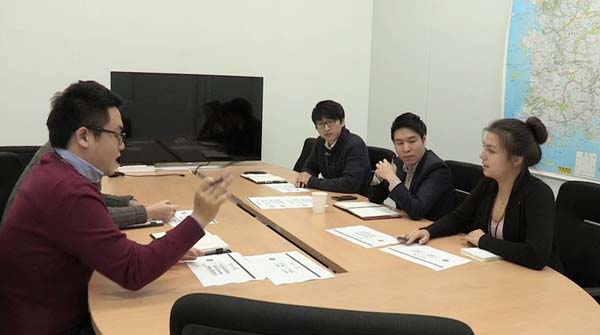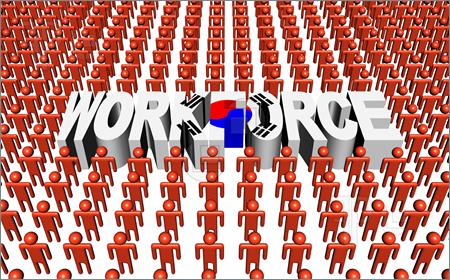
Four month low in Job growth sector
South Korea’s monthly job growth has declined to the lowest in four months, a government report showed on Wednesday.
The number of those employed totalled 26,141,000 in August, up 256,000 from a year ago, Xinhua cited Statistics Korea. However, it was the lowest August growth since August 2009 when the global financial crisis was going on and only 3,000 jobs were added.
Statistics show that the monthly job growth rebounded from 216,000 in April to 379,000 in May, boosting hopes for recovery in the labour market. However, it turned downward from 329,000 in June and 326,000 in July following the outbreak of the Middle East Respiratory Syndrome. The figure fell below the 300,000 level last month.
The South Korean finance ministry attributed the August slowdown in the job sector to the high base effect, arguing that in August 2014, some 600,000 jobs were added on a yearly basis, while the August figure in 2015 posted a relatively slower increase. As more people entered into the country’s labour market looking for work, the jobless rate rose while the hiring rate has decreased.
Job creation among manufacturers and service companies increased up to 3.6 percent and 4.8 percent each last month, but those in the agricultural, finance and insurance sectors slumped to 7.2 percent and to 5.7 percent respectively. The wholesale and retail industry dipped to 1.9 percent in August, marking the first decline in over two years. Consumers refrained from spending on concerns about economic slump and low income, contributing to the job reduction in the industry.
The South Korean finance ministry attributed the August slowdown in job growth to the high base effect, arguing that in August 2014, some 600,000 jobs were added on a yearly basis, while the August figure in 2015 posted a relatively slow increase. As more people entered into the country’s labor market for jobs, the jobless rate rose while the hiring rate decreased. The participation rate increased 0.1 percentage point from a year earlier to 62.8 percent in August. The hiring rate of those aged 15 or above was 60.7 percent in August, down 0.1 percentage point from a year earlier. The OECD- method employment rate for those aged 15-64 rose 0.2 percentage points to 65.9 percent.
The employment rate gauges the percentage of working people to the working age population, or those aged 15 or above. It is used as an alternative to the unemployment rate, and the government has a target of 70 percent over the long run. The jobless rate rose 0.1 percentage point from a year earlier to 3.4 percent in August this year. The so-called “sentiment” jobless rate, which the South Korean statistics agency began to unveil from November 2014 to reflect jobless conditions more accurately, was 11.5 percent in August, up from 11.3 percent in July.
The official unemployment rate gauges the percentage of those unemployed who actively sought jobs in the past four weeks to the sum of people employed and unemployed.The sentiment jobless rate includes part-time workers who hope to get a regular job working more than 36 hours a week and those who want to work but reply during the job survey period that they conducted no job-searching activity in the past four weeks.
The youth unemployment rate for those aged 15-29 came in at 8 percent in August, down 0.4 percentage points from a year earlier. It marked the first decline in about two years.Among wage earners, regular workers rose 4.2 percent in August on a yearly basis, with irregular workers almost unchanged. Those who work on a daily basis gained 1.6 percent last month.
The August employment was led by people of old age. Job creation in those aged more than 60 climbed 177,000, and those in their 50s and 20s expanded 121,000 and 39,000 respectively. Jobs added in their 30s and 40s slipped 60,000 and 17,000 respectively.The economically inactive population, or those aged over 15 minus the sum of those employed and unemployed, increased 1.4 percent, or 225,000, from a year earlier to 16,022,000 in August.
Among them, those in schools reduced 2.6 percent, but those in old age, housework and childcare increased 5.3 percent, 0.3 percent and 0.8 percent, respectively.The so-called “take-a-rest” group increased 9.8 percent, or 142, 000, in August from a year earlier. The group refers to those who replied that they took a rest during the job survey period. The group is important as it can include those who are unemployed and too discouraged to search for work for an extended period of time.
Those who were too discouraged to continue their search for jobs rose to over 539,000 in August, up from 454,000 a year earlier. Discouraged workers are those who want to work and are available to do so but failed to get a job due to tough labor market conditions. They are those who looked for jobs at anytime during the last 12 months.
